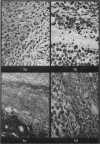Abstract
Various non-specific in vivo stimulants of phagocytosis, such as peptone, starch, glycogen, BCG, inhibit the growth of Walker carcinosarcoma in rats. This was confirmed by comparison of the histological appearance of tumour beds and tumours of peptone-treated and control rats. In rats given peptone or BCG, tumour inhibition was detectable only during a limited period of time. Experiments on the effect of pretreatment with peptone on the growth of Walker ascites tumour cells revealed a clear-cut inhibition, and suggest that tumour cells may be successfully eliminated during the lag phase. Data showing that activated macrophages labelled with 51Cr significantly accumulate around the tumour implant support the view that macrophages are of prime importance in the elimination of tumour cells in this model system.
Full text
PDF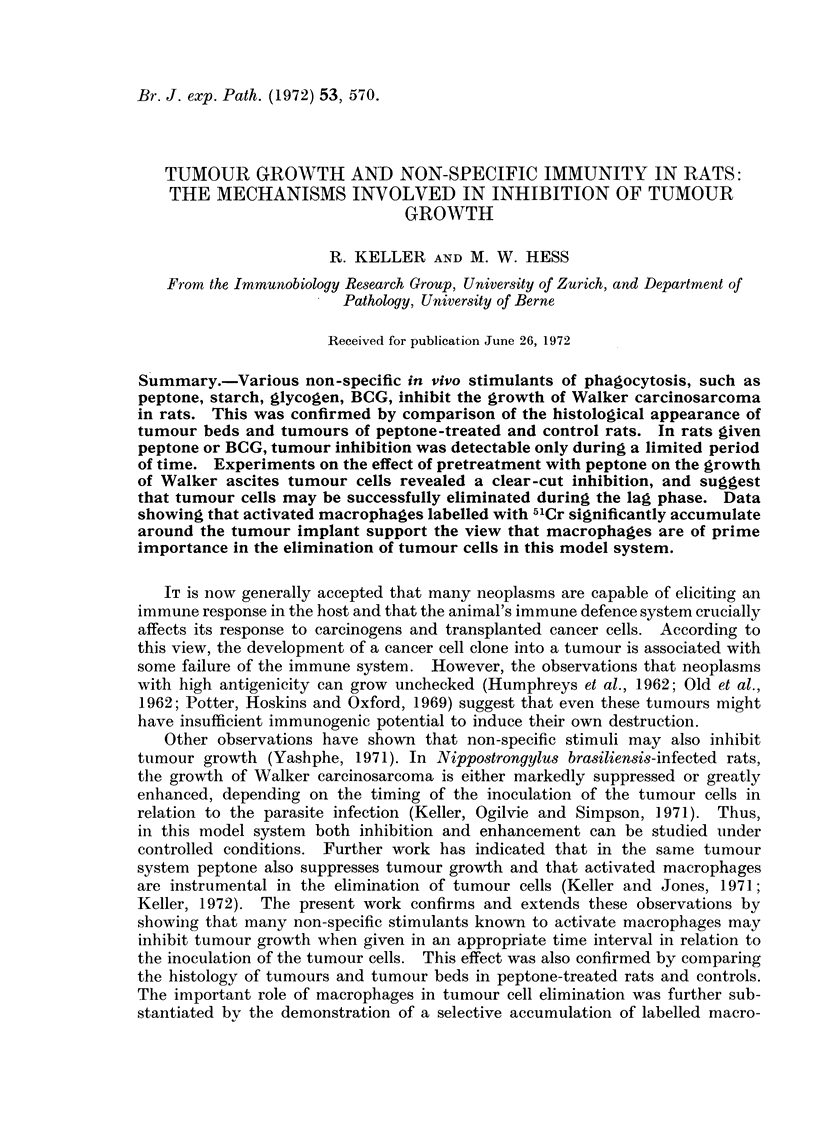
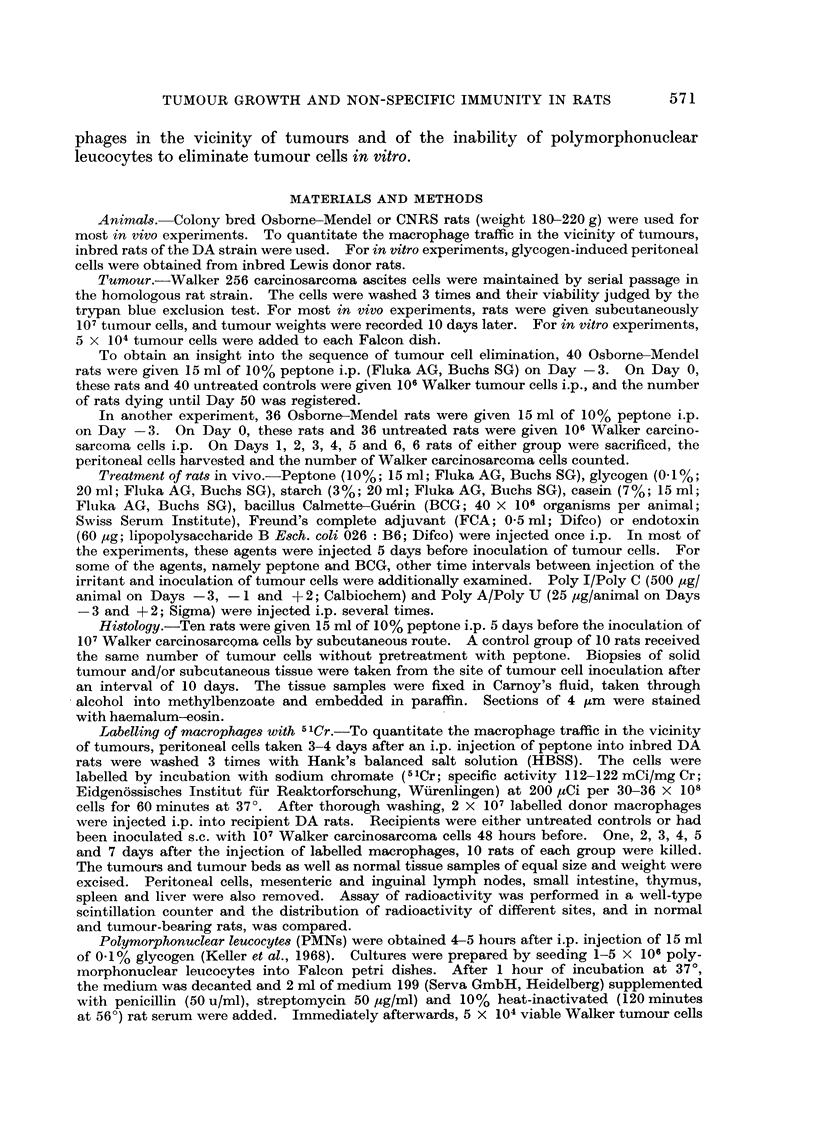
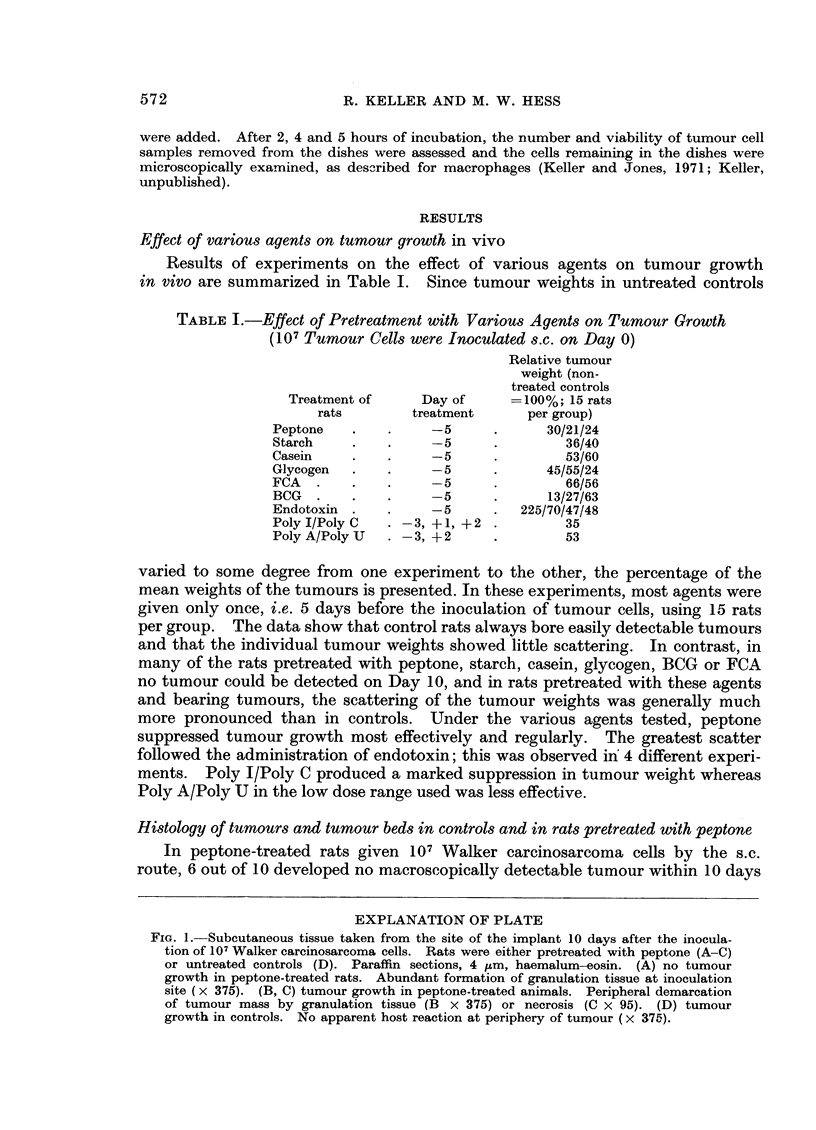
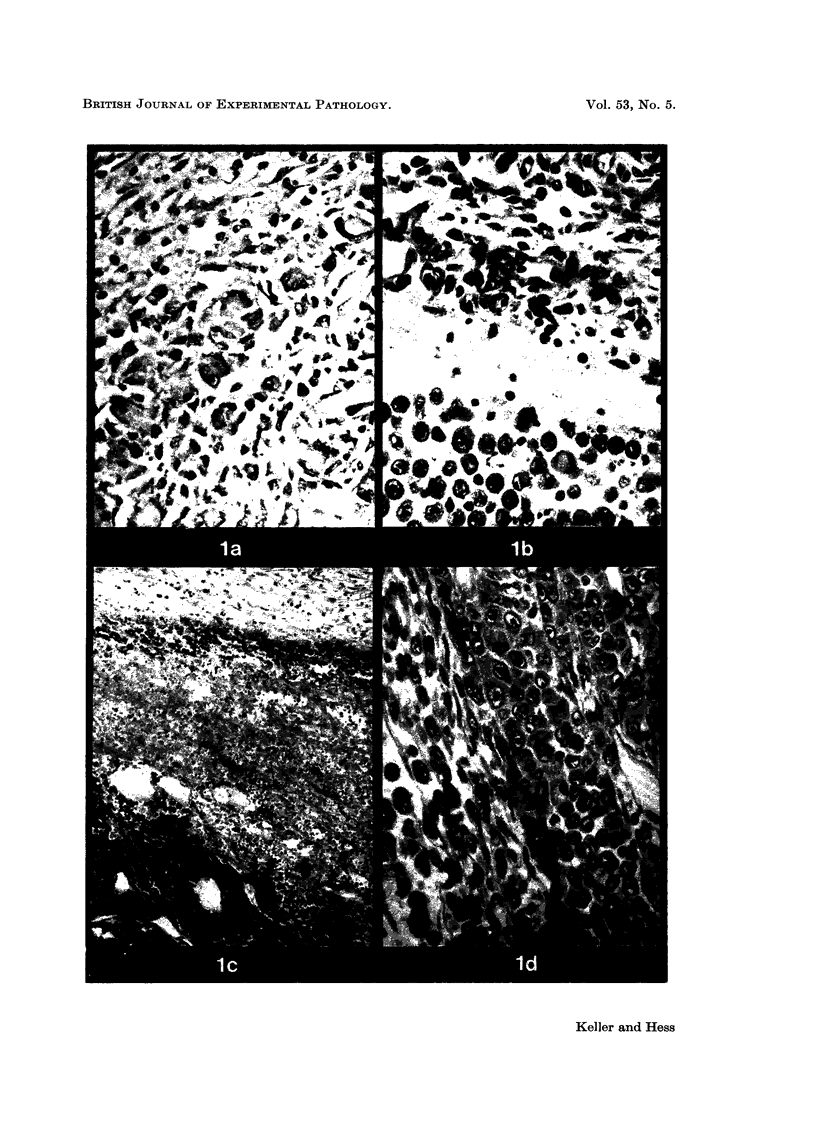
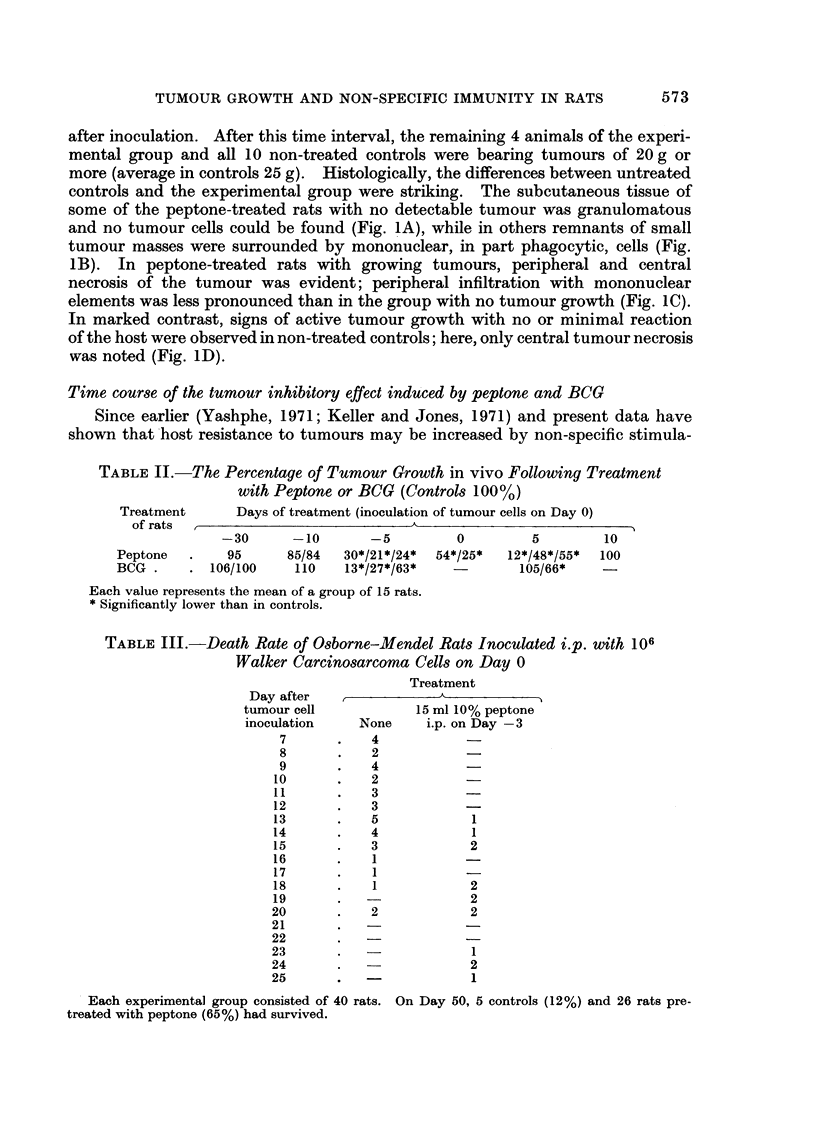
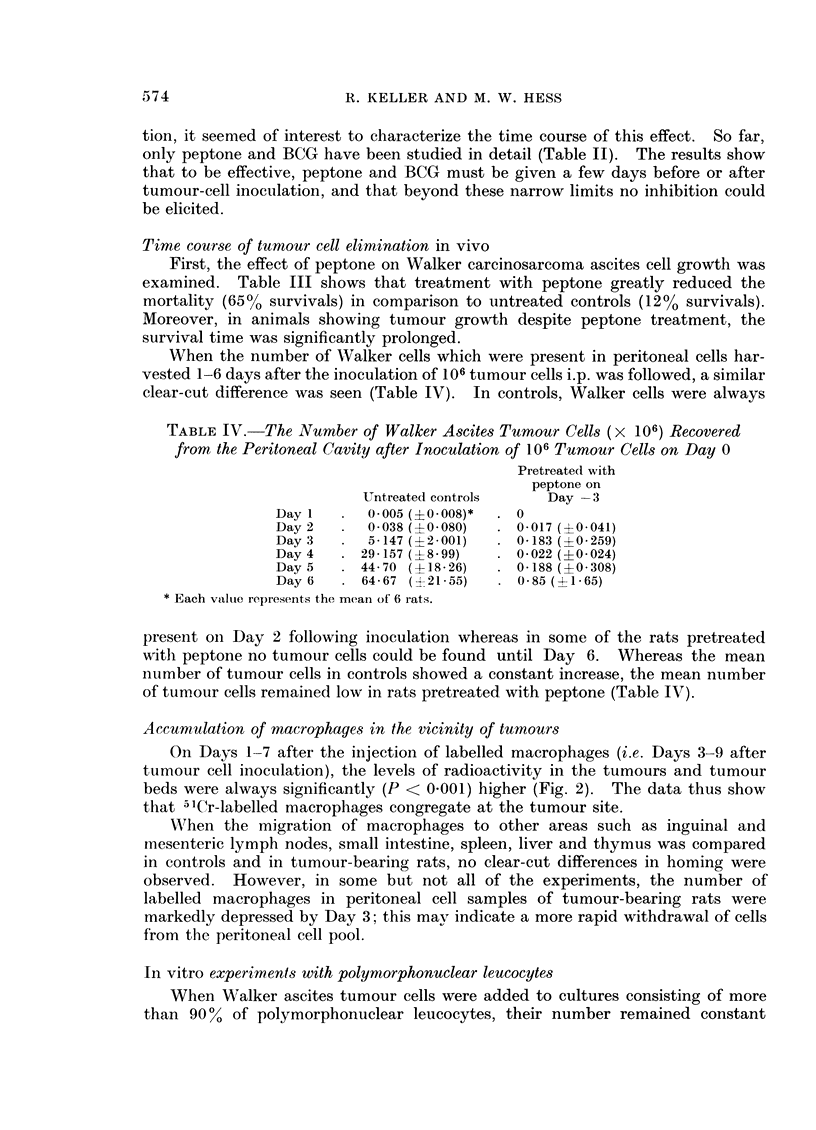
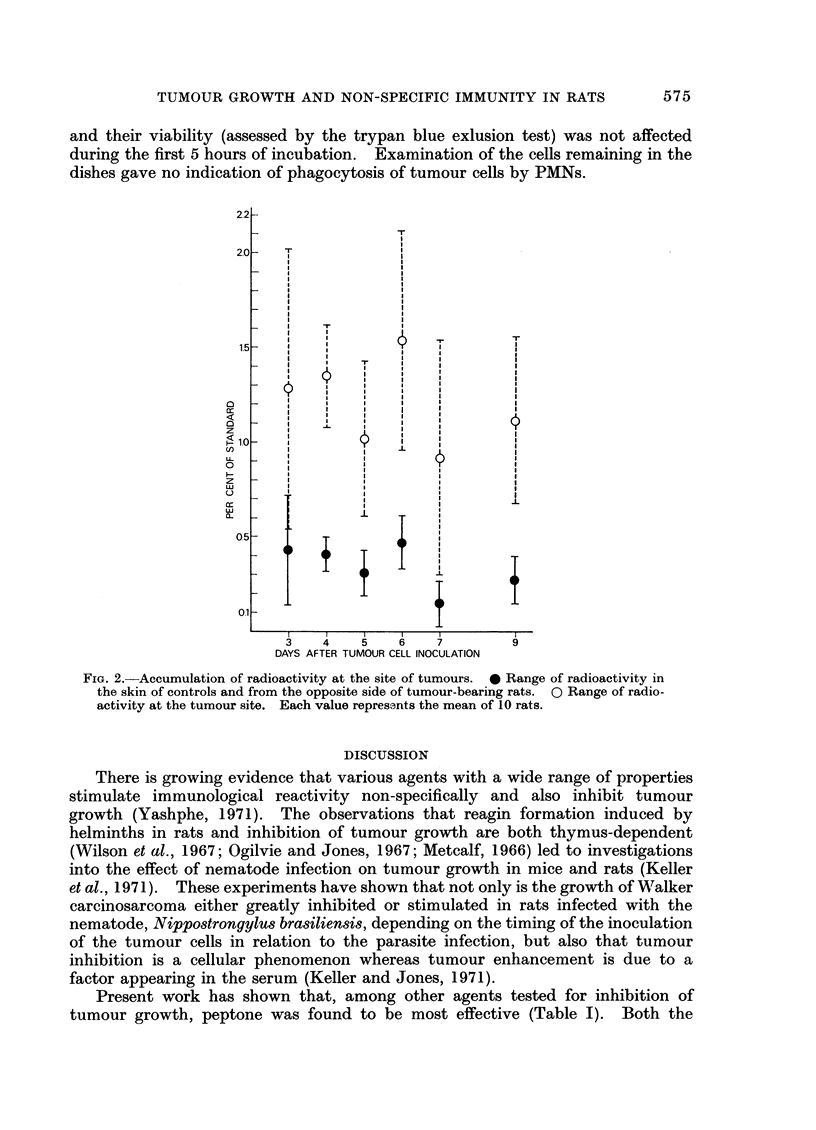
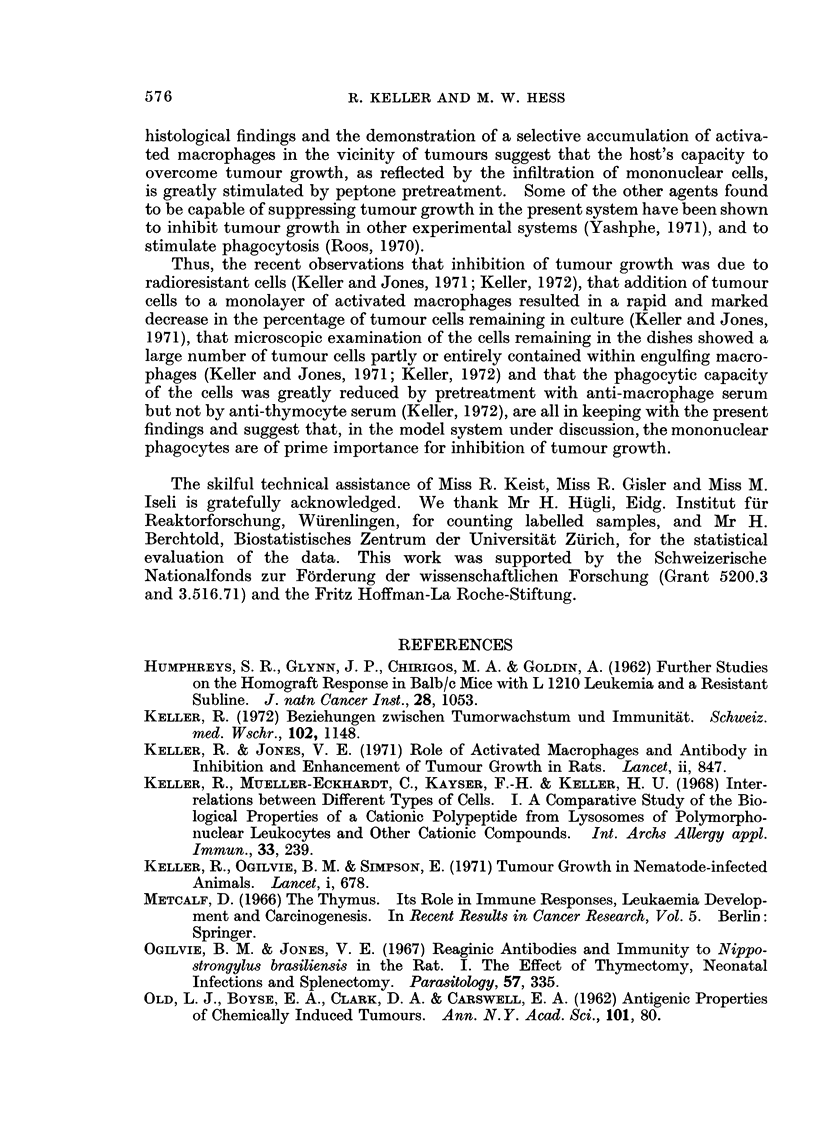
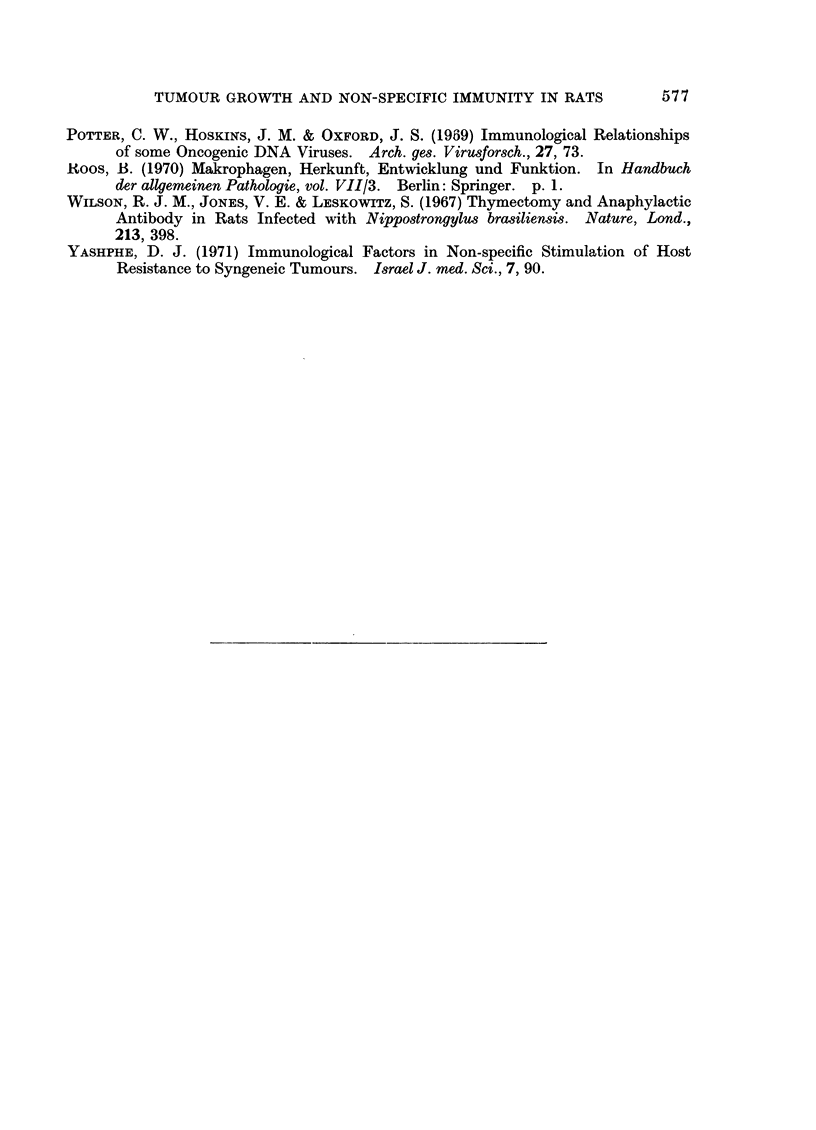
Images in this article
Selected References
These references are in PubMed. This may not be the complete list of references from this article.
- HUMPHREYS S. R., GLYNN J. P., CHIRIGOS M. A., GOLDIN A. Further studies on the homograft response in BALB/c mice with L1210 leukemia and a resistant subline. J Natl Cancer Inst. 1962 May;28:1053–1063. [PubMed] [Google Scholar]
- Keller R. Beziehungen zwischen Tumorwachstum und Immunität. Schweiz Med Wochenschr. 1972 Aug 19;102(33):1148–1151. [PubMed] [Google Scholar]
- Keller R., Jones V. E. Role of activated macrophages and antibody in inhibition and enhancement of tumour growth in rats. Lancet. 1971 Oct 16;2(7729):847–849. doi: 10.1016/s0140-6736(71)90222-4. [DOI] [PubMed] [Google Scholar]
- Keller R., Mueller-Eckhardt C., Kayser F. H., Keller H. U. Interrelations between different typs of cells. I. A comparative study of the biological properties of a cationic polypeptide from lysosomes of polymorphonuclear leukocytes and other cationic compounds. Int Arch Allergy Appl Immunol. 1968;33(3):239–258. [PubMed] [Google Scholar]
- Ogilvie B. M., Jones V. E. Reaginic antibodies and immunity to Nippostrongylus brasiliensis in the rat. I. The effect of thymectomy, neonatal infections and splenectomy. Parasitology. 1967 May;57(2):335–349. doi: 10.1017/s0031182000072139. [DOI] [PubMed] [Google Scholar]
- Ogilvie B. M., Simpson E., Keller R. Tumour growth in nematode-infected animals. Lancet. 1971 Apr 3;1(7701):678–680. doi: 10.1016/s0140-6736(71)92683-3. [DOI] [PubMed] [Google Scholar]
- Potter C. W., Hoskins J. M., Oxford J. S. Immunological relationships of some oncogenic DNA viruses. I. Transplantation immunity studies. Arch Gesamte Virusforsch. 1969;27(1):73–86. doi: 10.1007/BF01250316. [DOI] [PubMed] [Google Scholar]
- Wilson R. J., Jones V. E., Leskowitz S. Thymectomy and anaphylactic antibody in rats infected with Nippostrongylus brasiliensis. Nature. 1967 Jan 28;213(5074):398–399. doi: 10.1038/213398a0. [DOI] [PubMed] [Google Scholar]
- Yashphe D. J. Immunological factors in nonspecific stimulation of host resistance to syngeneic tumors. A review. Isr J Med Sci. 1971 Jan;7(1):90–107. [PubMed] [Google Scholar]



